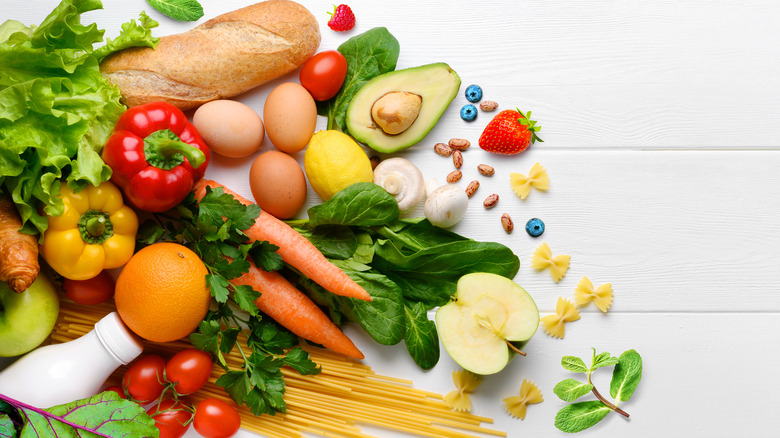This Big Change Is Coming To The US Food Assistance Program
Putting dinner on the table and food in the refrigerator is not always as easy as filling one's cart with tasty treats. For many people, the struggle to pay for those items can come with difficult decisions. The Supplemental Nutrition Assistance Program (SNAP), however, offers assistance to "the food budget of needy families so they can purchase healthy food and move towards self-sufficiency." (per USDA). According to a recent report on TODAY, though, this food assistance program will increase benefits by "more than 25% from pre-pandemic levels." Although these changes will not take place until October, the announcement may provide some hope for families who are struggling with their food bills.
Per TODAY, a family of four can receive a maximum of $835 a month in benefits. As agriculture secretary Tom Vilsack said, "Ensuring low-income families have access to a healthy diet helps prevent disease, supports children in the classroom, reduces health care costs, and more" (per USDA press release). "And the additional money families will spend on groceries helps grow the food economy, creating thousands of new jobs along the way." The increase in benefits is meant to improve families' access to nutritional foods. The hope is to help remove these barriers to access and provide the support to give families the healthy meals that they need.
While food insecurity was a topic of conversation long before the pandemic, the health crisis has shed new light on the subject. Whether or not this monetary increase will make a substantial impact remains to be seen. But having more funds could help families add a few more food choices to their shopping carts.
How are increasing food costs impacting SNAP?
As reported by Fortune, the Consumer Price Index continues to rise. While some people might not want to venture back to high school economics class, this indicates that "prices for groceries and other food prepared at home increased 2.6%" over the past year. If one's bank account balance is lower, yet the refrigerator still seems empty, the increased costs could be the primary factor. For families who receive assistance from SNAP, the Supplemental Nutrition Assistance Program, the rising costs could be even more disheartening and potentially add to the food insecurity issue.
According to the USDA, the monthly benefit for SNAP has four factors that influence the dollar amounts offered. The factors include "current food prices, what Americans typically eat, dietary guidance, and the nutrients in food items." As food prices continue to increase, the government could have to continue to adjust monthly contributions. While the SNAP program is meant to supplement a family's budget, it has to evolve as food costs change. Although people can debate the pricing, value, and food options, the goal is to put good nutrition on the table. In order to start chipping away at food insecurity, it will take many pennies to make a bigger dent on the bottom line.

